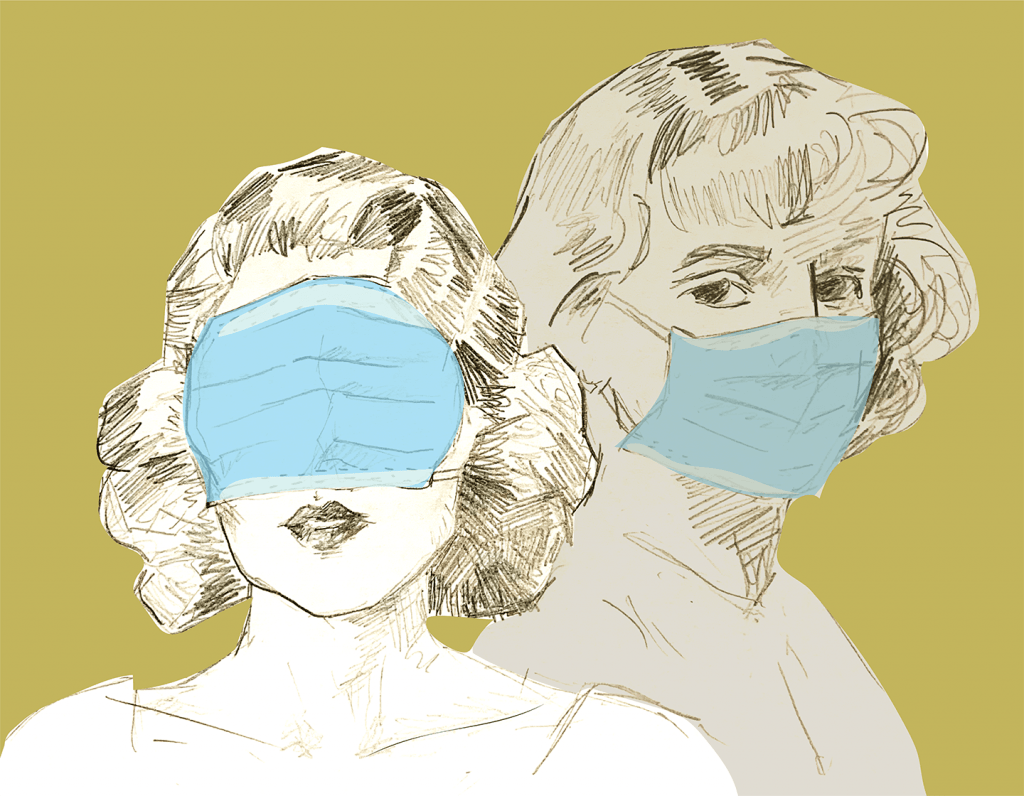
Art by Samantha Miller
There are currently 656 student COVID cases, with 389 of those being students who live on campus, as of Wednesday January 19, according to the COVID-19 University Updates webpage. With the amount of cases presented at such an early point in the semester, it begs the question, was the University prepared for such a large number this early?
Students receive countless emails daily about virus updates, information and changing status from Pepperdine; however, they receive vague information on what to do if they test positive. All students know for sure is they are thrown into a desolate isolation period.
For how long must they stay quarantined? Where do they quarantine? How soon after they test positive do they have to leave campus?
These are all valid questions that students should have answers to, especially those who live on campus. One instance of this was with first-year Mark Mangano who lives in Seaside Residence Hall. He said he was left in the dark about what would happen next when he got exposed to COVID.
“I didn’t know where I would be going to quarantine. It took around two hours to figure out what the next steps were and where I would be quarantining,” Mangano said. “I had no idea how long I would be there for, I was told right when I left to go to the hotel, on the way there.”
Imagine the confusion of finding out about positive test results or possible exposure and then learning there would also be relocation. The only information Pepperdine administration do give students is that they must remain isolated after being exposed or testing positive, not necessarily being relocated off campus.
The emails sent to students consist of a number to call when students test positive and their weekly reminders to get PCR tests on campus. There should be more specificities about the location of a positive case quarantine, which hotels they would be sent to and how long they would have to pack up their things.
An email sent out the evening of January 18 stated, “Residential students who receive a positive test should contact the Resident Director overseeing COVID-19 cases,” however more transparency about where students go would be a great addition to an email such as that.
Mangano said there was 30 minutes between the time he knew he had to leave campus and driving himself to his isolation location. Additionally, Mangano received no emails from Pepperdine regarding his actual exposure.
“I had to contact the COVID supervisor myself,” Mangano said. “I never got an email from anyone, even though it was my roommate who exposed me, I did everything myself.”
Pepperdine created a COVID-19 Compliance Task Force that is, “responsible for establishing and enforcing all COVID-19 safety protocols and ensuring the staff and students receive education about COVID-19,” according to the COVID-19 Protocols and Resources webpage.
This task force clearly has not been as present as they should be during the numerous positive cases that have broken out just in the first two weeks of classes beginning. Misinformation and miscommunication have lead to confusion among the community. After Mangano quarantined at an inn in Calabasas for around five days his fate — among the other hundreds of students who tested positive — is still unknown.
“I don’t even know if I can come back on campus,” Mangano said, “I’ve called all of the numbers listed on the COVID isolation reference email and was sent to voicemail for all of them.”
For a small, private institution, there is too much disorganization among the communication between administration and students. Don’t put the community in a position to be sent home, because there is a lack of control of the situation. The intentions of the University can be hypothesized as good, but the execution of the matter presents itself as hazy to the students of Pepperdine.
Pepperdine University needs to be more transparent and strategic with its protocols and COVID-19 procedures. There is no need for the amount of uncertainty and foggy understanding of the arrangements for positive test cases and exposures. Students need to know the procedures, protocols and possibilities clearly in emails or updates.
The administration could provide a list of possible hotels students on campus could be sent to, a time range for how long quarantine could last for positive cases and maybe even the earliest time they can safely test negative, all would be helpful for community members. With more clarity comes more preparedness, otherwise its back to square one for the University under no one’s fault, but their own.
____________________
Follow the Graphic on Twitter: @PeppGraphic
Email Emily Chase: emily.chase@pepperdine.edu

